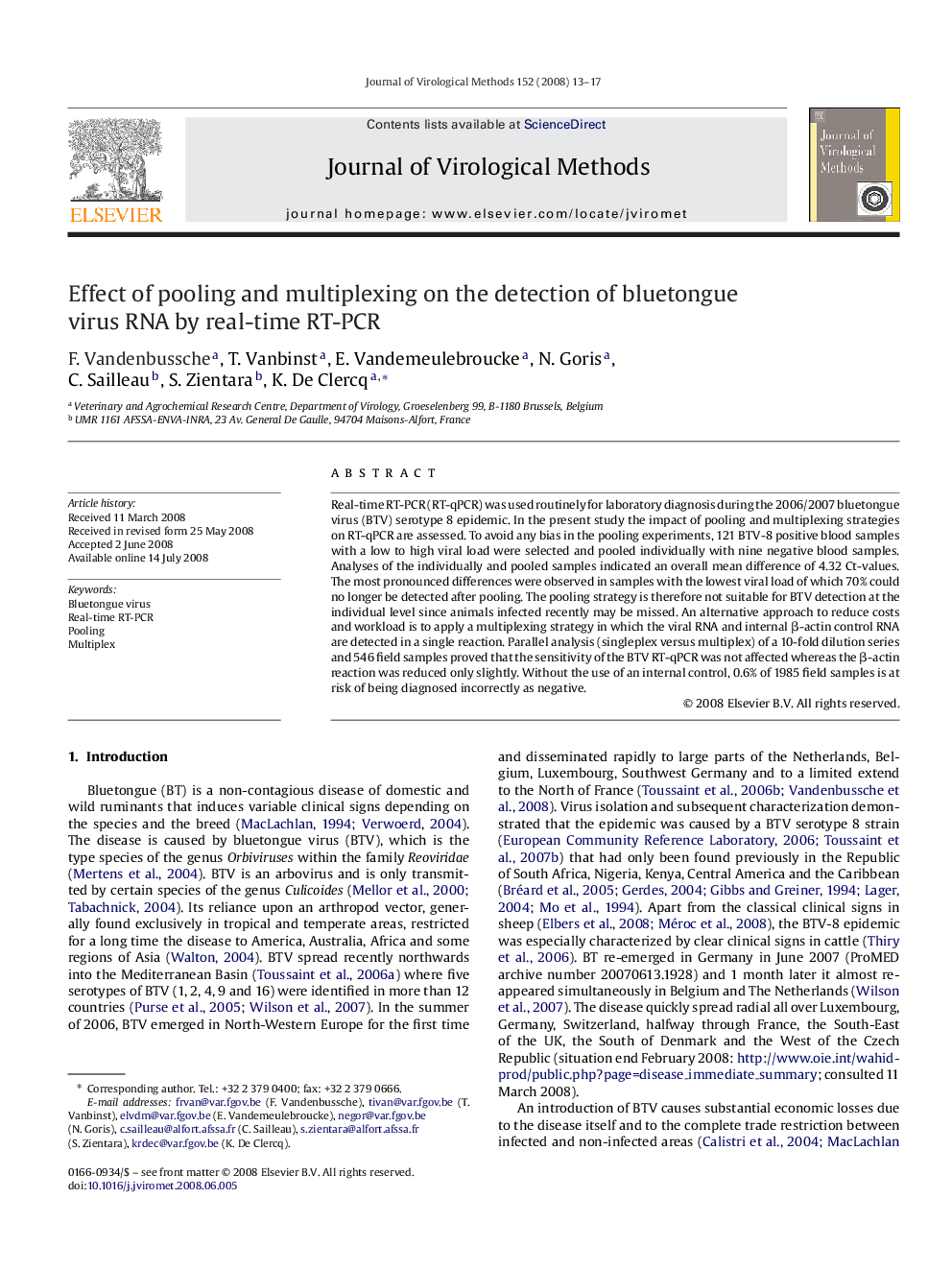| Article ID | Journal | Published Year | Pages | File Type |
|---|---|---|---|---|
| 3407770 | Journal of Virological Methods | 2008 | 5 Pages |
Real-time RT-PCR (RT-qPCR) was used routinely for laboratory diagnosis during the 2006/2007 bluetongue virus (BTV) serotype 8 epidemic. In the present study the impact of pooling and multiplexing strategies on RT-qPCR are assessed. To avoid any bias in the pooling experiments, 121 BTV-8 positive blood samples with a low to high viral load were selected and pooled individually with nine negative blood samples. Analyses of the individually and pooled samples indicated an overall mean difference of 4.32 Ct-values. The most pronounced differences were observed in samples with the lowest viral load of which 70% could no longer be detected after pooling. The pooling strategy is therefore not suitable for BTV detection at the individual level since animals infected recently may be missed. An alternative approach to reduce costs and workload is to apply a multiplexing strategy in which the viral RNA and internal β-actin control RNA are detected in a single reaction. Parallel analysis (singleplex versus multiplex) of a 10-fold dilution series and 546 field samples proved that the sensitivity of the BTV RT-qPCR was not affected whereas the β-actin reaction was reduced only slightly. Without the use of an internal control, 0.6% of 1985 field samples is at risk of being diagnosed incorrectly as negative.
